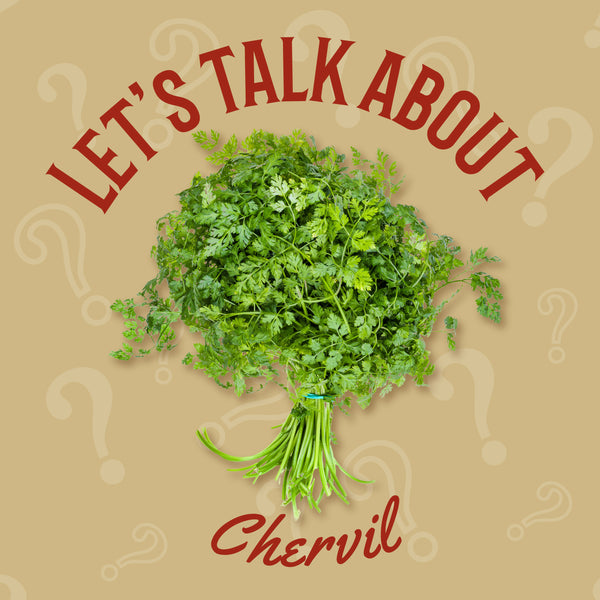Nov 01, 2023
Let's talk about...
Chervil!

Enter the enchanting world of chervil, a delicate herb with a subtle yet distinctive flavor that has captured the hearts of chefs and home cooks alike. Despite its understated presence, chervil boasts a rich history and a range of culinary applications that make it a valuable addition to any kitchen. Join us as we delve into the background, explore its unique flavor profiles, and uncover some intriguing fun facts about this unsung hero of the herb garden./p>
Background
Chervil, scientifically known as Anthriscus cerefolium, is a member of the parsley family native to regions of Europe and Asia. With its delicate, fern-like leaves and subtle, anise-like aroma, chervil has been cultivated for centuries for both culinary and medicinal purposes. Ancient civilizations, including the Greeks and Romans, prized chervil for its culinary versatility and believed it to possess healing properties.
Throughout history, chervil has been used in a variety of culinary traditions, from French cuisine to Middle Eastern dishes. It is often referred to as "gourmet parsley" and is prized for its ability to enhance the flavors of a wide range of dishes, from soups and salads to sauces and seafood.
Flavor Profile
Chervil's flavor is delicate yet distinctive, with hints of parsley, anise, and citrus. It is often described as having a mild, slightly sweet taste with subtle notes of licorice. Unlike other herbs, chervil's flavor is best enjoyed fresh, as it tends to lose its potency when dried.
In culinary applications, chervil is valued for its ability to add a subtle depth of flavor to dishes without overpowering other ingredients. It is commonly used as a garnish for soups, salads, and egg dishes, as well as a seasoning for sauces, dressings, and marinades. Chervil's delicate flavor pairs well with a wide range of ingredients, making it a versatile herb for both savory and sweet dishes and is used in our citrus herb blend, Somethin' To Cluck About.
Fun Facts
- Chervil was highly prized by ancient civilizations for its medicinal properties and was used to treat ailments such as digestive issues, respiratory problems, and insomnia. It was also believed to have aphrodisiac properties and was used in love potions and rituals.
- In medieval Europe, chervil was often associated with witches and magic. It was believed that hanging chervil in the home would protect against evil spirits and bring good luck.
- Chervil is a key ingredient in the classic French herb blend fines herbes, which also includes parsley, tarragon, and chives. This aromatic mixture is used to flavor a wide range of dishes, from sauces and soups to omelets and quiches.
- Chervil is sometimes referred to as "gourmet parsley" or "French parsley" due to its association with French cuisine and its use in upscale culinary dishes.








